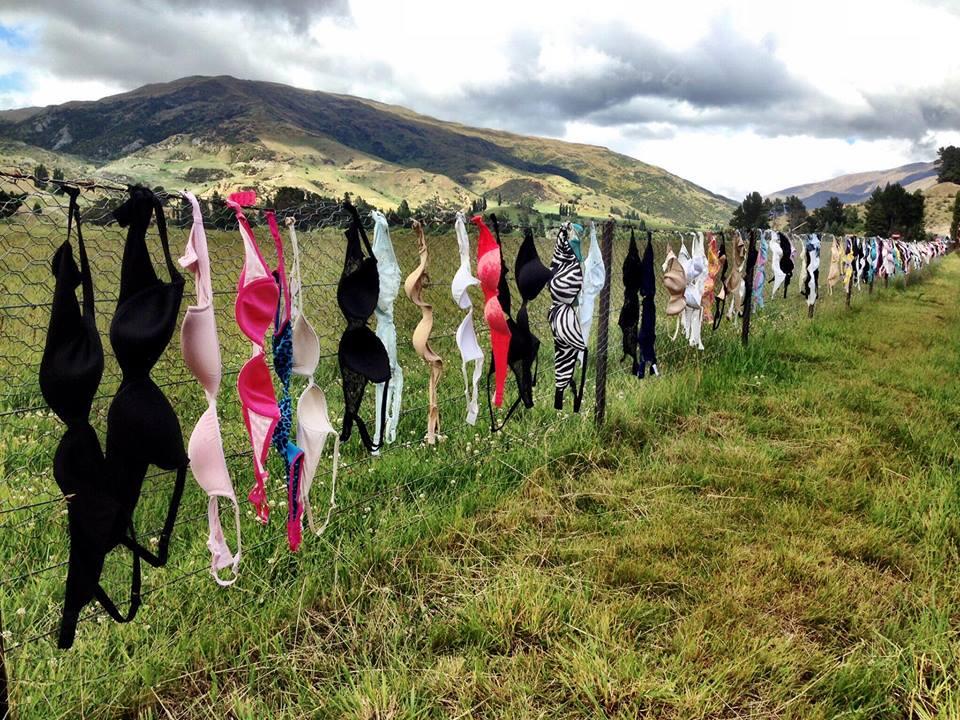New Zealand, as we move from a more stately democracy to one of the most prosperous countries in the world

The history of New Zealand is not taught in school, also because of its extremely isolated geographical location and outside of major continental events. The fact of being discovered by Westerners only in the seventeenth century certainly did not help.
Historical premises
English colonization
New Zealand is a relatively young country: the first human communities to settle there were the Maori[1] between the thirteenth and fourteenth centuries, from Polynesia.
New Zealand remained virtually unknown to the western world until 1642, when the Dutchman Abel Tasman was the first European to step in, followed by James Cook nearly 130 years later, in 1769.
Later the country began to be visited regularly by sealers and whale hunters initially, then followed by the first settlers and traders. From 1830 the settlers became more numerous, and these contacts changed the Maori culture forever. The Maori were interested in Western technological benefits, and the British imported new animals and plants, such as pigs and potatoes. On the other hand, the introduction of muskets in the Maori tribal culture transformed local wars into much larger campaigns, where those known as the Musket Wars they brought devastation among the tribes, paving the way for further British expansion. More and more Western settlers began to arrive, and the waves of lawlessness that were spreading far and wide led the local tribes to seek support from the crown.

Great Britain, pressed partly by the demands of the Maori, and partly by the preoccupation for the French ambitions on New Zealand, consented in 1840 to stipulate the Treaty of Waitangi, which sanctioned a sort of equal rights among all New Zealanders, Maori, and others. On the other hand, the treaty allowed Britain to declare New Zealand an English possession.
Over time the Maori were under increasing pressure to cede land and possessions to the settlers, resulting in a war that lasted over twenty years, during which much of the Maori land was either bought or confiscated. Meanwhile, the colonies of the South Island prospered and the British government helped thousands of citizens start a new life in New Zealand, expanding and building new cities and infrastructure. With an almost entirely agricultural economy, most of the forests were demolished to make room for farms and fields.
The Maori today are by far the biggest ethnic minority and their culture has strongly characterized the identity of the country.
Independence
The independence of New Zealand is still a matter of debate. There has not been a precise date for this transition, but rather it is the outcome of a continuous constitutional evolution. As a consequence, New Zealand does not celebrate any “Independence Day”.
The first step towards internationally recognized nation status was when New Zealand was given a seat in the new League of Nations in 1919. In 1926 the Balfour Declaration proclaimed the status equality of the British dominions. The declaration was followed in 1931 by the Westminster Statute, which declared the effective independence of the six “domains”[2] belonging to the Commonwealth.
However, since many New Zealanders were still considering themselves a branch of the United Kingdom, New Zealand initially refused to ratify the statute, accepting to adopt it only in 1947, with the Act of Adoption of the Statute of Westminster. It was only with the entry of the United Kingdom into the European Community in 1973, abrogating the preferential to trade agreements with New Zealand, that this attitude began to change. Gradual national and social changes further eroded this relationship.
Social and economic changes

New Zealand was one of the countries to recover faster after the Wall Street crisis of 1929, and in the 1950s it was one of the countries with the highest GDP. The isolationist regime had somehow helped to develop manufacturing and a variegated industrial fabric, but in the 1960s it was growing clear that New Zealand was lagging behind other countries.
Between 1973 and 1984, the New Zealand government was overwhelmed by a number of interrelated economic crises, such as the oil crisis, the disorderly rise in inflation, and the alarming unemployment growth. The Muldoon government (conservative) pursued a series of unreasonable macroeconomic measures, tightening government control over the entire economy, with the result of generating dramatic fluctuations in inflation and economic growth. In despair, Muldoon froze prices and salaries (even the highest ones![3]), down to directly managing even hotels. In the attempt to stabilize the economy, the government ventured into a series of large-scale investments, such as the construction of refineries and the expansion of the steel industry. Muldoon’s strategy, however, failed miserably, even obtaining the opposite effect, and in the early 1980s, the average per-capita salary of New Zealanders had fallen below that of Portugal.
The uncontrolled explosion of these problems caused the constitutional crisis of 1984, leading to new elections, with the rise of David Lange’s Labor Party.
Deregulation
The Labor government immediately attempted to reverse the course with a series of constitutional reforms, which introduced a tight monetary policy and a progressive liberalization of the markets. These measures, after an initial internal recession, began to bear fruit starting in the 1990s, with an exponential growth in the labor market, a drastic reduction in debt and an increasing competitiveness of the New Zealandish industry.
NR 8 wire: the innovative spirit of Kiwis
When we associate New Zealand and technology, the story that comes out most often the “Number 8 wire attitude“. In the nineteenth century, in fact, breeders used this wire to build fences for sheep. However, the wire could be reused in many ways, and farmers could solve almost any practical problem by simply twisting it and re-packing it. It was virtually transformed into a handyman material, a kind of rural New Zealand swiss knife.
In the coming decades, thread No. 8 became a broader metaphor of the adaptive spirit of a people who lived far from everything and had to be independent and resourceful. The New Zealanders took pride in their ability to solve problems in unusual and sometimes crude ways.

Technological innovation in the Kiwi nation
Although not everyone agrees on the effectiveness of that attitude, contesting that this sort of “quick and dirty” spirit does not always produce replicable innovations, and underestimates the role of the invention, New Zealand is investing in technology, and they are producing innovations that can compete with Silicon Valley.
These are top-level technological results, not “patches” made with the first thing found on hand. Improvisation has made room for a more methodical and ambitious kind of invention.
GoDaaS, Government Desktop as a Service
The GoDaaS is a multi-tenant cloud service that Fujitsu has implemented for the New Zealand government, based on Citrix infrastructure. It is a service that provides traditional and virtual desktops, remote support, onsite, applications, and hardware devices, allowing users to work where and how they need.
This proved crucial in the 2016 earthquake, when a government agency managed to move from zero availability of IT services to a secure digital work environment in 4 days, managing to meet a critical deadline for the publication of key economic statistics.
BabyX
Baby X 3.0 (4.0 is underway) is a prototype of an animated virtual child. It is a psychobiological simulation developed by the Animated Technologies Laboratory of the University of Auckland.
This simulation, which is already unbelievable even in this prototype stage, uses computational models based on simulations of biological neural networks that are really involved in learning processes and interactive behaviors.

Auckland Face Simulator
Also from the same laboratory of BabyX, there is the Face Simulator, an incredible facial simulation, based on the real mechanics of the facial muscles. It is able not only to perfectly synchronize the labial in text-to-speech (transformation of texts written in vocal sounds ) but also facial expressions, producing interactive faces practically indistinguishable from the real ones.
Rocket Lab, bookable space flights
Rocket Lab has recently successfully launched the first rocket in orbit last January. Not only did the rocket reach orbit, but it was able to deploy 3 satellites into service, something unprecedented so far. The rocket consists mostly of carbon components produced with 3D printers and is now accessible to customers to send in orbit any load for the “modest” expense of $ 4.5 million.
REX, bionic exoskeleton for rehabilitation
Rex is a robotic platform built by Rex Bionics for the clinical rehabilitation of patients with spinal cord injuries, but also usable by the same patients at home for everyday life.
Lifepod Infant Incubator
Ray Avery embodies the spirit of Kiwi engineering: he is a prolific scientist and inventor. He made his fortune in the pharmaceutical sector, and now he decided to return some of what he received by dedicating his talent to the service of the most disadvantaged.
The Lifepod is an incubator for newborns virtually indestructible, purifies its own air and water, and it only costs $ 2,000, compared with 40,000 other incubators.
NOTES
[1] The term “Maori” did not actually exist until the arrival of Europeans. Actually, it means “ordinary” and the Maori used it to distinguish themselves from the new, light-skinned settlers.
[2] We talk about Canada, Australia, Ireland, Newfoundland, New Zealand and South Africa.
[3] The attempt to guarantee to all citizens pensions equal to 80% of the last salary had contributed to a debt explosion, and the government tried to stem the problem by putting a ceiling on the salaries.
LINKS
An Economic History of New Zealand in the Nineteenth and Twentieth Centuries
New Zealand’s technology sector is booming – but education needs to catch up
As New Zealand Courts Tech Talent, Isolation Becomes a Draw
THE INVESTOR’S GUIDE TO THE NEW ZEALAND TECHNOLOGY SECTOR (pdf)
Technology is New Zealand’s future








